Bartlett students weave Plexe-e furniture from foam tubes
Masters students from the Bartlett School of Architecture have used cement-covered foam pipes to create Gothic-style arches, columns and furniture (+ movie).
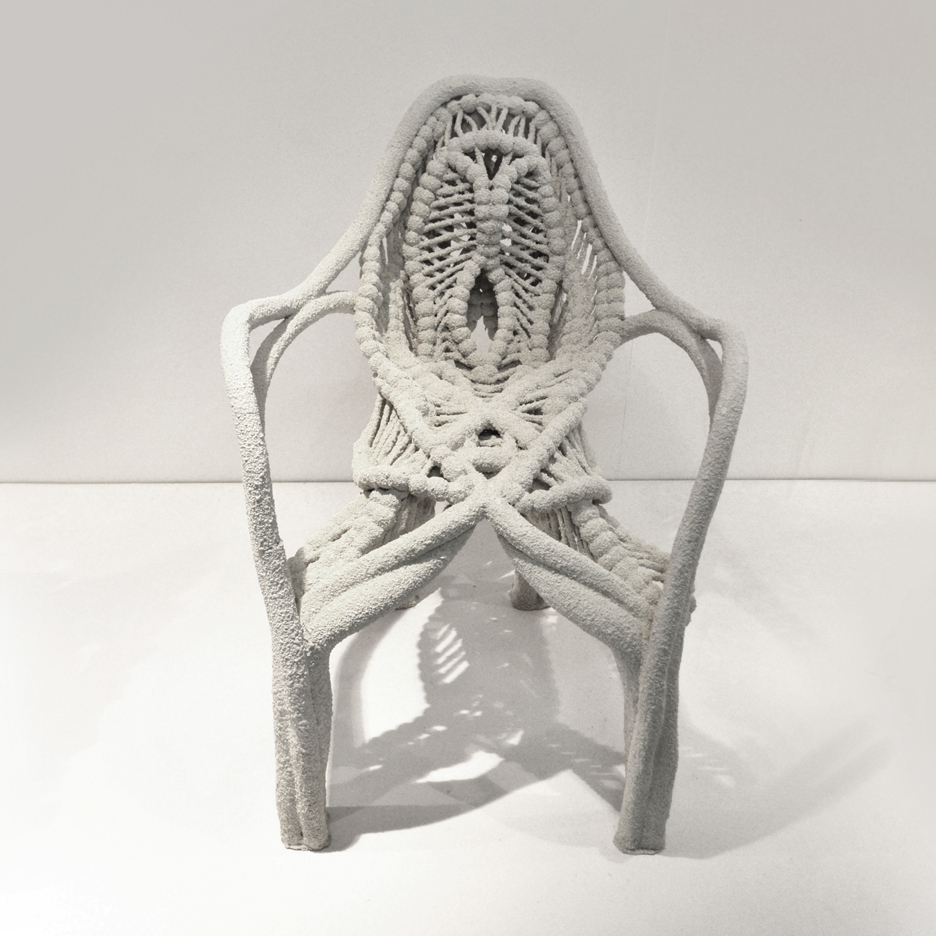
The group used different methods of weaving to wrap the foam tubes together, first by modelling the processes on the computer. A variety of ornamental patterns were then created by wrapping thread around the pipes to create regularly-spaced ball-shaped sections.
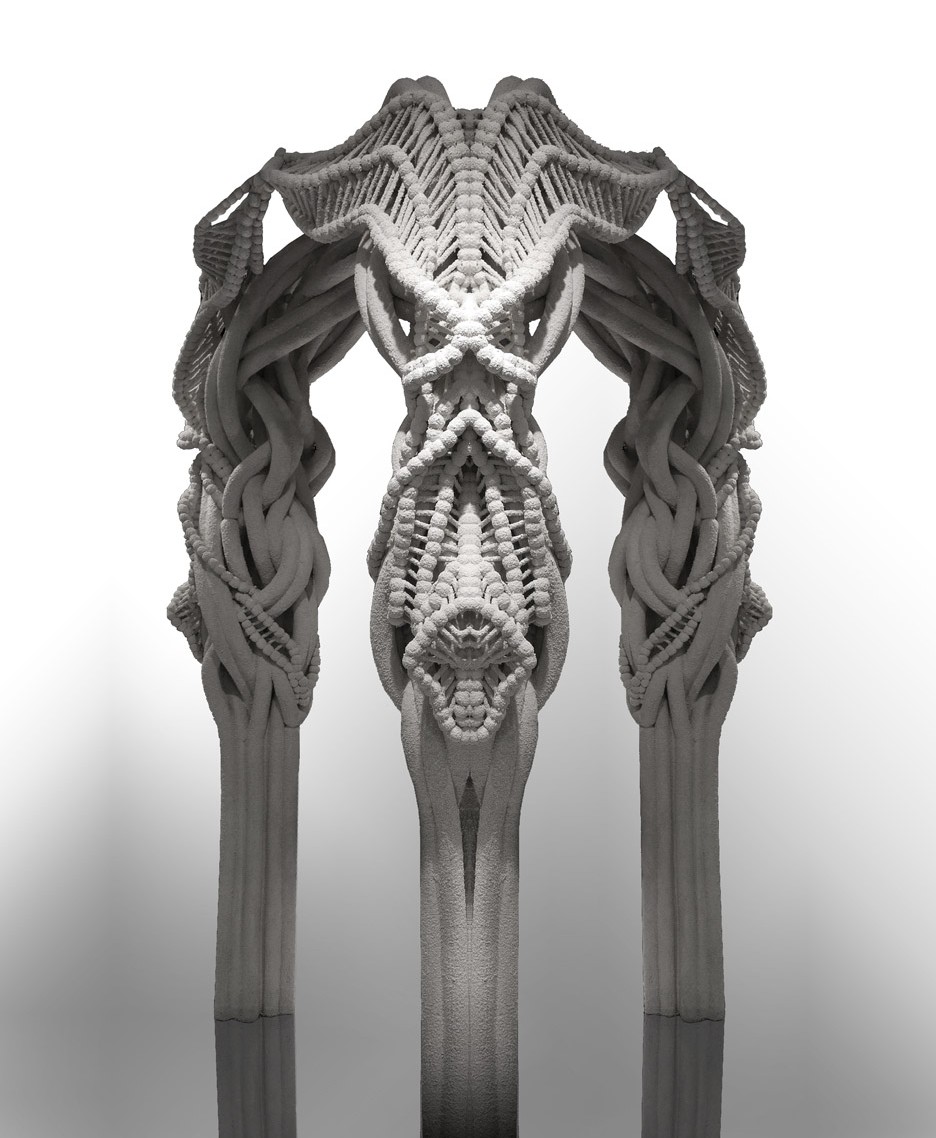
The tubes were stitched together to form complex structures including chairs, columns and arches.
The name of the project, Plexe-e, is taken from the Latin word plectere, which means to braid, plait or twine an object.
"Weaving is a cross-cultural fabrication technique of crafting that started thousands of years ago," said team member Christina Bali.
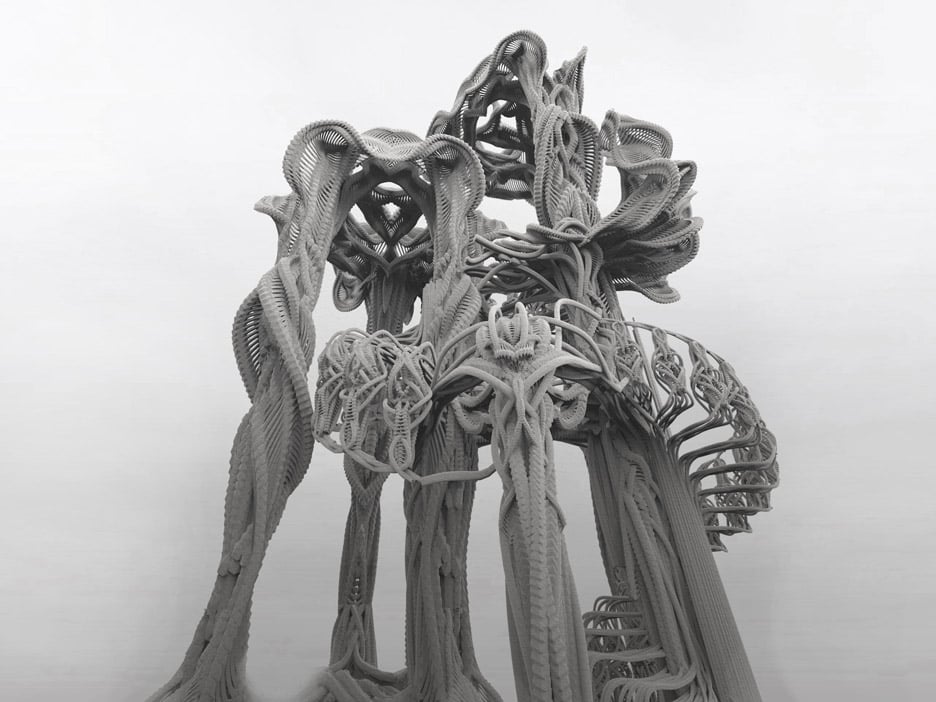
"The essential purpose of using weaving as a methodology, was to produce a system that supports individual pieces that cannot stand on their own, while are able to support each other," she added.
The group – composed of Christina Bali, Nadiah Shahril and Christiana Tzovla – worked under the tutorship of Daniel Widrig, Stefan Bassing and Soomeen Hahm. The students were tasked with exploring "freehand production and crafting" using computational design.
The students created a resin mix that would set the tubes in place while allowing them to remain lightweight. A composite of white concrete was added to the foam to reinforce it, before the structures were sprayed with more concrete to become rigid.

"The design of each piece was created based on advanced computer simulations," explained Bali.
"The main target was to attribute the digital prototypes in the real world," she added. "Hence, physics and materiality gave us constraints on how to design digitally and even though the results were quite intricate and complex it was proved that everything could be generated in real life."
To create more elaborate and detailed shapes, bundles of pipes provided structural support, while surfaces were covered in ornamental sections of foam tubing. The pipes were wrapped in thread and tied together using rope.
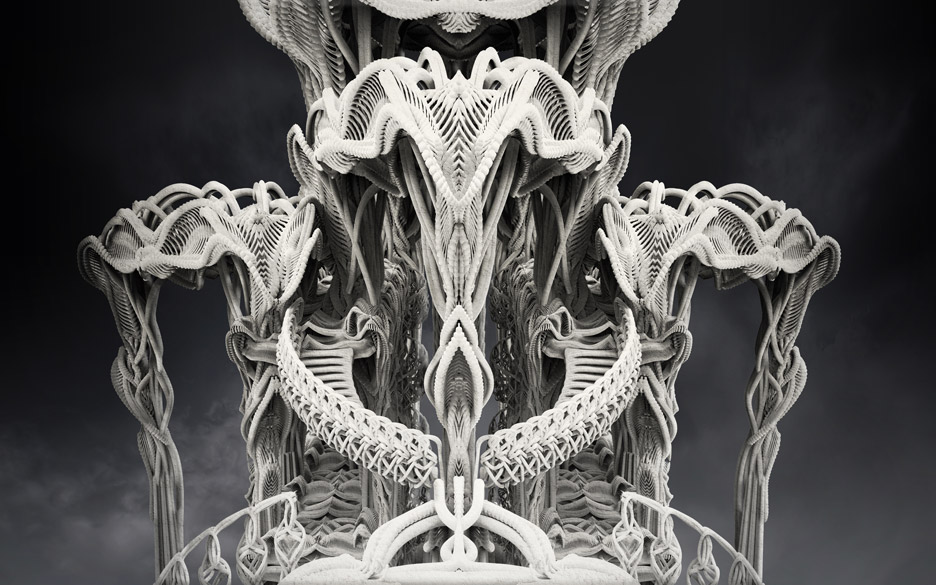
"It tries to prove that complex architectural spaces can be the result of advanced digital computational tools, simulating convectional weaving procedures," said Bali.
"The future of textile based construction looks promising in light of the proliferation of curvilinear forms in building design today," she added. "While soft materials when hardened are not always well suited for complex shapes and stresses, new materials have yet to emerge."
"The use of advanced computational software has now become such an enabling medium for complex design purposes. Hence, fabrication, materialisation, and computational advances should interweave together to produce new design approaches."
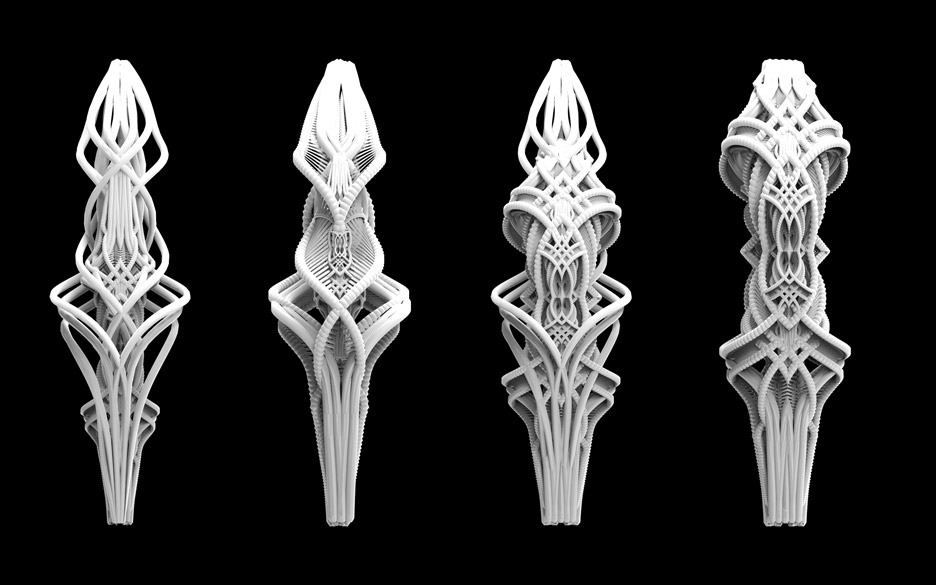
Fellow Bartlett students on the same masters course also designed intricate chairs, built using a felt-like composite material that appeared to be soft but could support weight.
The Plex-e project was exhibited at the Bartlett School of Architecture's B-Pro show in London, which ran from 29 September to 10 October 2015.